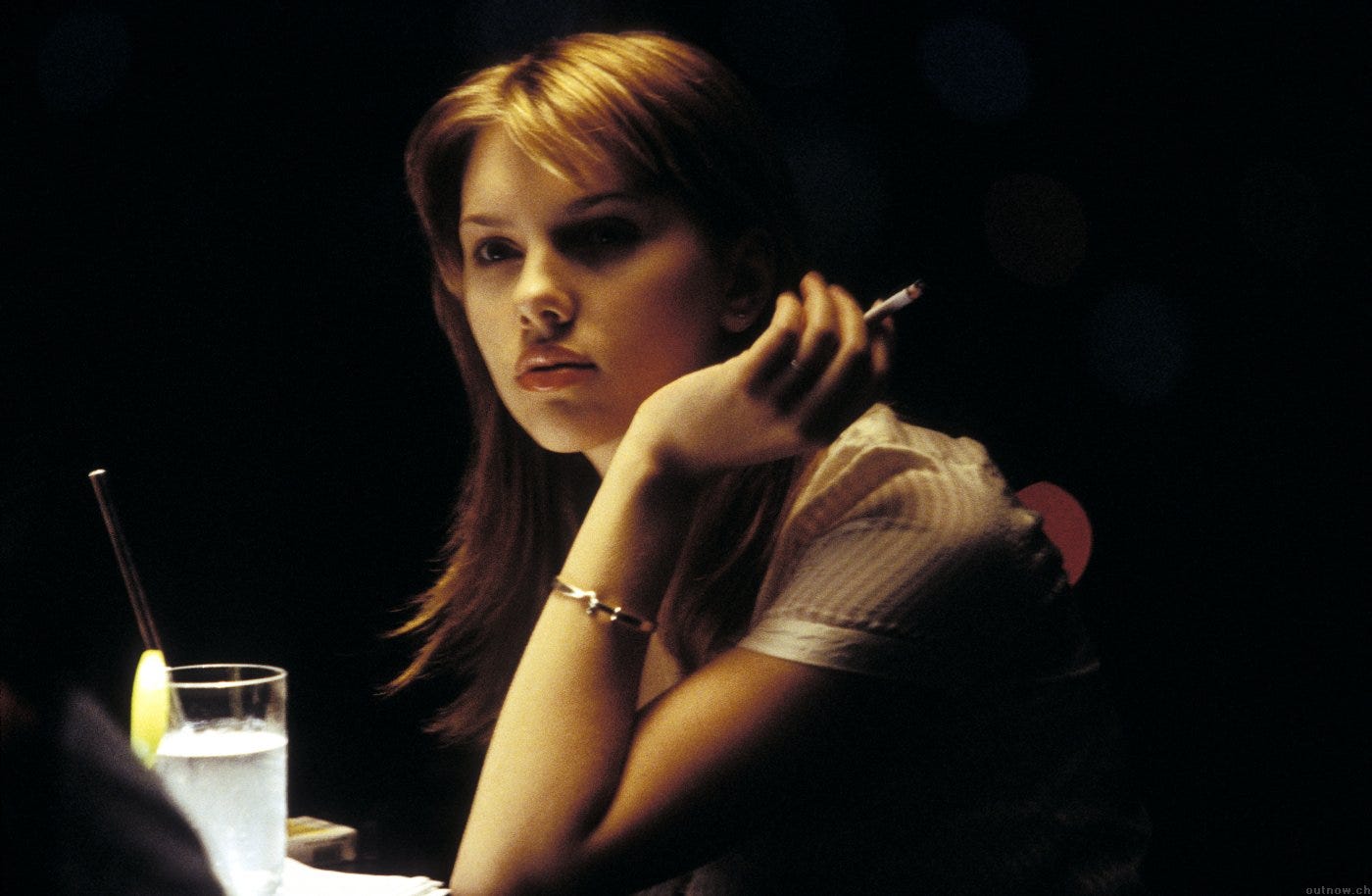Lost in Translation

And the value of keeping filmmaking simple
When Sofia Coppola directed her first film, “The Virgin Suicides”, the outcome was respectable, but there was still a lot of potential for improvement. Expectations were set high for the daughter of world famous filmmaker Francis-Ford Coppola, who directed movies such as “The Godfather” and “Apocalypse Now”. In addition, being a female director did not make it easier in a male driven business. Another barrier was that many people still remembered her weak performance as an actress in the Godfather III.
Rather than being intimidated by these obstacles, Sofia Coppola was inspired and challenged. With her second feature, “Lost in Translation”, Coppola created one of the most thoughtful and inspiring movies made in the last decade. This hilarious, intelligent melodrama thrills the audience by an incredible and unobtrusive humor, while still dealing with serious issues. The film tells the story of two lonely souls, who form an extraordinarily bonded friendship in an alien world. The director tells a pleasantly simple story, matched with gripping dialogues, spectacular cinematography by Lance Accord and fine performances by Bill Murray and Scarlett Johansson.
“Lost in Translation” stars Bill Murray as Bob Harris, an aging movie star who goes to Tokyo to shoot a whiskey commercial for a quick two million dollars. He is having a mid-life crisis and his career and marriage are losing their color they once had.
At the bar of the “Park Hyatt” hotel, he meets Charlotte, a Yale philosophy graduate, played by Scarlett Johansson. She accompanies her husband, a self-absorbed photographer, who is stressed out by his career and does not really have time to take care of his wife.
When Charlotte’s husband leaves the city for a photo shoot for a few days, she and Bob come together and discover the bizarre world of the vibrant cosmopolitan city — Tokyo.
Western countries are not accustomed to Japanese culture and Coppola consciously chose to show these differences. The peculiar rituals in karaoke bars, hysterical Japanese in video game halls, the consistent kindness of Japanese to Bob, who is helplessly opposed to it, or Tokyo’s bizarre chain of lights at night, radiate authenticity.
Coppola shows all the singularities of Japanese culture and that makes the film direct, realistic and usually honest. Sofia Coppola also wrote the film. Because of her numerous trips to Japan, Coppola wrote an authentic and brilliant script. The lack of dialogue sometimes is purposefully used to further demonstrate that language is never the key barrier between individuals. People connect through attitudes, emotions, ideas and beliefs rather than words.
The two leading roles were perfectly cast. The performances by Bill Murray(“Rushmore”) and Scarlett Johansson (“The Horse Whisperer”, “Match Point”) are brilliant throughout the movie. As an actor, at first, Bill Murray benefited from his comic talent. In this movie, he plays the comic role seriously. For a young woman, Scarlett Johansson, displays maturity and classic beauty.
One of the best scenes in the film, in fact, is when Bob and Charlotte are in one of their rooms. It is an overhead shot. They are in bed entirely dressed and talking. While she is on her side, her feet barely touching the side of his leg, he is on his back with his arms at his side. He helps her by answering her questions regarding life and direction. They also talk about his marriage and children. The dialogue is truly great.
Before the scene fades, he moves his hand and lays it slightly on her feet. It illustrates how close they have become, and that there is a bond of mutual trust and appreciation, not one of lust. This has more intensity and intimacy than any bed scene could have.
The film does not use an original soundtrack, so there is no consistent musical theme throughout the movie. Instead, Coppola chose a music compilation from various artists, mostly Japanese, which are unfamiliar to a western audience. This underlines the disconnect that comes from being a stranger in a strange land. Without an original soundtrack, a film might lack depth and sentiment. However, the director intentionally wanted to let the audience feel isolated from emotion, so it can identify more with the characters.
This motion picture is not constructed the way a typical Hollywood movie usually is. The storyline is simple, but the real joy in this movie is hidden inside the plot and the dialogue of the protagonists. It focuses on its two characters, so it becomes more observable and relatable for the audience. Although some might not like the slow pace of the movie, this makes it even more captivating.
The director has the susceptibility to respond to an important matter. “Lost in Translation” makes us think and reflect on our own lives. Coppola truly shows her talent and has an instinctive feeling for setting up the subtle mood and atmosphere.
In the final scene, Bob and Charlotte exchange a tender kiss and bid each other farewell. This marks a great ending for a stunning and fascinating movie.